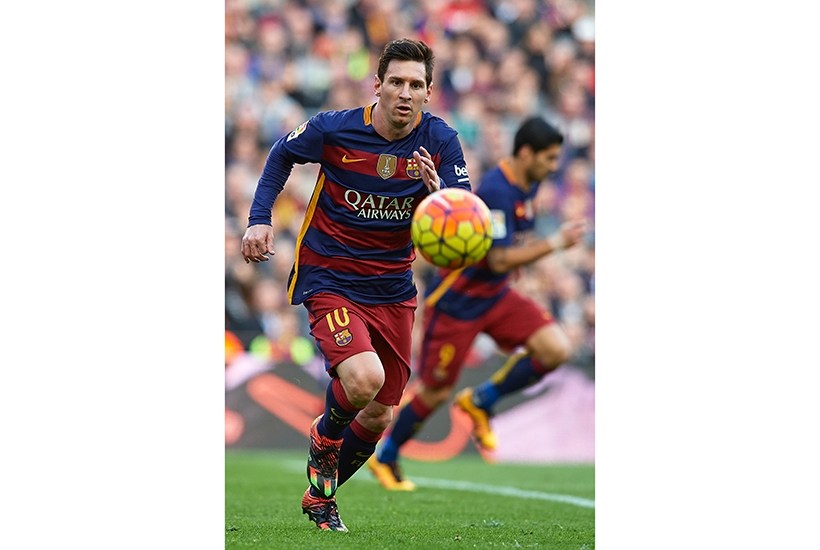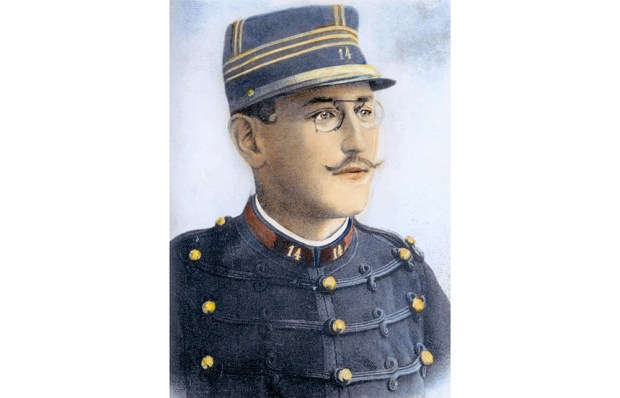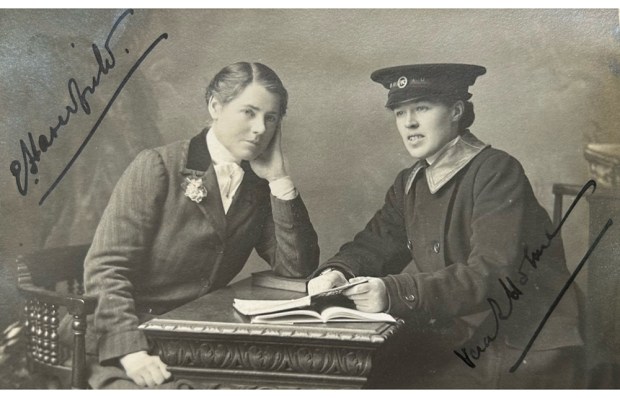Even against our better judgment we tend to imbue our sporting heroes with characteristics they may not possess. This can often lead to disappointment. What passes for fluency on the pitch is seldom matched with any articulacy off it. Lionel Messi, arguably the best player of his generation, is no exception. The Argentinian’s inability to communicate verbally has rendered him an enigma.
In Simon Kuper’s incisive and fascinating new book — one that charts FC Barcelona’s transformation over the past three decades from provincial club to international brand — Messi cuts as elusive a figure on the page as he is does off it. ‘Even now that Messi sometimes talks,’ writes Kuper, ‘he still shows almost no inclination to explain either his art or his power within Barça. It’s not clear that he is able to.’ Fortunately, Kuper, an astute journalist who has always brought intelligence to writing about the game, is well-placed to give an explanation. He has been able to draw on the ‘200-plus notebooks’ that he has amassed since 1998 and has interviewed most people associated with the club.
To understand Barça’s golden age (2008-2015), Kuper has focused on the triumvirate of Johan Cruyff, Pep Guardiola and Messi (the book is essentially split into three parts) and their common footballing culture. Cryff and Guardiola are more straightforward propositions, whereas, as we know, Messi is not. Kuper learns ‘by watching [the Argentinian] closely, and by listening to people who have watched him even more closely’. The ritual is always the same. In the opening minutes, Messi strolls around the pitch and observes the opposition set up their positions. He ignores a pass, unwilling to engage. Guardiola, his former manager, explains it thus: ‘After five, ten minutes, he has the map in his eyes and in his brain, to know exactly where is the space and what is the panorama.’ As one player later tells Kuper: ‘You’re playing here with the very best players in the world… but he’s quite far above that.’
Nevertheless, the star turn in the book is Cruyff. Kuper, who grew up in the Netherlands, sketches a convincing portrait of his childhood idol, a Dutch Quixote who played for Barça in the 1970s and then managed the club a decade later. He may be remembered for the ‘Cruyff Turn’ in the 1974 World Cup, but for many Dutch and Catalan fans who saw him play ‘the total Cruyff is [their] secret. Whereas Messi belongs to global culture, Cruyff belonged almost only to Dutch and Catalan culture’.
Cruyff the coach was as uncompromising as Cruyff the player, refining his own variation on the conflictmodel (a strategy of confrontation to improve tension and heighten team spirit) that his former coach Rinus Michels had employed at Ajax and Barça. (Cruyff also liked to keep a pack of loyal journalists to be unleashed whenever there was a perceived slight.) He invented a geometrical language for the ‘beautiful game’ and implemented the rondo, a piggy-in-the-middle passing exercise in the restricted space with defenders striving to intercept the ball. But he could also be oblique (‘even when Cruyff talked nonsense, it was always interesting nonsense’). He once told a reporter: ‘If I’d have wanted you to understand, I would have explainedit better.’
When Frank Rijkaard’s tenure as manager of Barça came to an end, Cruyff was asked to return with Guardiola as assistant. Cruyff declined. Guardiola (who had learned from the Dutch master) was ready to coach by himself. Cruyffian philosophy, or Cruyffismo, was now deeply embedded in the club’s culture: ‘Cruyff shaped and then anointed both the coaches who between 2003 and 2012 won three of the five Champions Leagues in Barcelona’s history.’
Barça’s rise to prominence had the good fortune to coincide with the emergence of Messi. The Argentinian seemed to embody Cruyff’s maxim: ‘Before I make a mistake, I don’t make that mistake.’ Yet, if Guardiola was to refine Cruyffismo with any success, he needed skilled graduates from Barça’s academy, La Masia. Kuper believes the secret of La Masia was always the scouting, not the coaching. The formulation remains a simple one: brilliant players mean less coaching. The evidence is in a Masia roster that includes Puyol, Iniesta, Xavi, Busquets and Piqué.
What emerges from the book is an unrelenting culture of excellence. For Iniesta, a midfielder of sublime ability, ‘playing for Barça is not just playing a football match. It’s brutal pressure, constant tension, training perfectly every day, being the best in every match’. The club’s local fan base has been equally demanding of success, but not at any cost. Unlike Real Madrid, they want the spectacle first and then a passion to win.
Kuper’s intention to write a book explaining the club’s greatness was overtaken by events. He ended up recording its demise. The club’s motto — més que un club (more than a club) — was always likely to become a hostage to fortune. With heightened success came the requisite factionalism and financial irregularities (Messi and his father were convicted of tax fraud in 2016 but only handed a fine). The pandemic has hastened the fall, with the club now €1.17 billion in debt. Barça has acquired the moniker ‘the club of three billion’: a billion euros each for income, expenses and debt. Messi has since left Barça for Paris.
Ultimately, this is a tale in the Iberian Baroque tradition. Spain’s 17th-century poets had a word for it: desengaño. Rather than straight disillusionment, it is the concept of the scales clearly falling from the eyes.
Got something to add? Join the discussion and comment below.
Get 10 issues for just $10
Subscribe to The Spectator Australia today for the next 10 magazine issues, plus full online access, for just $10.
You might disagree with half of it, but you’ll enjoy reading all of it. Try your first month for free, then just $2 a week for the remainder of your first year.














Comments
Don't miss out
Join the conversation with other Spectator Australia readers. Subscribe to leave a comment.
SUBSCRIBEAlready a subscriber? Log in